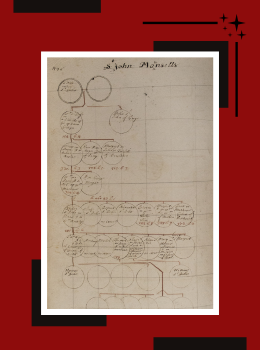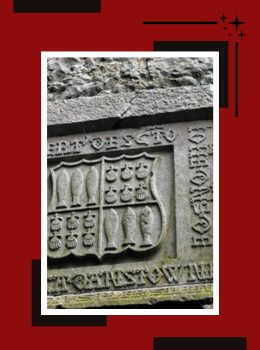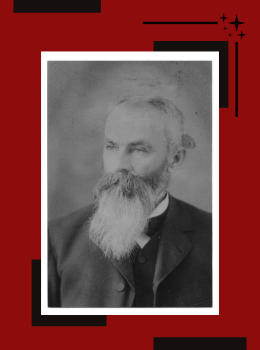
 The St. John Genealogy Project
The St. John Genealogy Project
Origin and Ancestry DNA Database & Electronic Archive
Beneath the dust of crumbling parchments and behind the double helix’s silent code, your ancestors have been waiting. Not as vague shadows in a pedigree, but as flesh-and-blood participants in history’s pivotal moments—from the salt-sprayed ramparts of Mont-St.-Michel to the unmarked graves of forgotten heirs.
This is not another genealogy site. This is a forensic reconstruction of what it truly meant—and means—to bear the St. John name. Every record here has passed through three fires: the acid test of provenance, the crucible of genetic matching, and the cold scrutiny of Occam’s razor. What remains is neither tradition nor theory, but historical truth. From the Norman conquerors of England to the colonial shadows where branches were lost, we resurrect their lives.
You’ll find no crowdsourced family trees built on fantasy and folklore here. Our archives resemble a medieval courtroom more than a library—where disputed lineages face cross-examination, where "accepted facts" endure sworn testimony, and where your DNA serves as both witness and judge.
The St. John story wasn’t written—it was fought over. Every record, every lineage, and every conclusion presented here has been personally vetted through my 17+ years of specialized research - combining medieval documents, genetic evidence, and forensic methodology.
Warning: May disprove cherished family claims.
 Sir John St. John, Knight of Stanton-St. John
Sir John St. John, Knight of Stanton-St. John
Argent, on a chief gules, two mullets of eleven points or, pierced vert. [glass at Dorchester, Oxfordshire]
 Sir John III St. John, Knight of Instow
Sir John III St. John, Knight of Instow
Ermine on a chief gules two mullets or. Appeared with his brothers Roger & Hugh below in the court of Glamorgan representing the Honour of Gloucester in 1299. He was the son of John II St. John, of Stanton-St. John & Petronilla de Clare, of Instow. He married Isabella de Courtney of Tapley, Devon.
 Sir Roger St. John, Knight of Instow
Sir Roger St. John, Knight of Instow
Ermine, on a chief gules, or two mullets, pierced with vert. (The first Dunstable tournament 1308) Appeared with his brothers John above & Hugh below in the court of Glamorgan representing the Honour of Gloucester in 1299. He was the son of John II St. John, of Stanton-St. John & Petronilla de Clare, of Instow.
 Sir Hugh St. John, Knight of Instow
Sir Hugh St. John, Knight of Instow
Ermine on a chief gules three mullets or. Appeared with his brothers John & Roger above in the court of Glamorgan representing the Honour of Gloucester in 1299. He was the son of John II St. John, of Stanton-St. John & Petronilla de Clare, of Instow.
The St. John family of Stanton St. John exemplifies the intricate interplay of heraldic and genealogical evolution in medieval England. Originating from Ralph of Saint-Jean-le-Thomas in Normandy, the St. Johns ascended to prominence in Oxfordshire, England following the Norman Conquest. By the 13th century, the family had established at least three cadet branches: the St. Johns of Lageham in Surrey, the St. Johns of Instow in Devon, and the de Port-St. Johns of Basing in Hampshire, the latter descending paternally from Adam de Port. Notably, the Instow and Basing branches exhibit distinct Y-DNA signatures, underscoring their separate lineages. Heraldry played a dual role as both a unifying and differentiating mechanism for these branches, with distinctions such as pierced Vert and bends (Sable and Gules) serving as markers of cadency. Modern genetic evidence further corroborates and clarifies these genealogical distinctions, resolving long-standing ambiguities.
Coming Soon: St. John Mercantile is a service provided by the St. John Genealogy Project. Our mission is to preserve, verify, and celebrate the rich history of the St. John family lineage while supporting genealogical research and discovery.
The shop was created to help members and researchers raise funds to afford DNA testing to establish and confirm genealogical connections, fund research, cover operational costs, and purchase rare documents and transcriptions to make records accessible.
 Sir John St. John, Knight & 1st Baron Lageham
Sir John St. John, Knight & 1st Baron Lageham
Argent, on a chief gules, two mullets Or, a bordure engrailed Vert.
 Sir Hugh St. John, Knight of Lageham
Sir Hugh St. John, Knight of Lageham
Ermine, on a chief gules, or two mullets (Hugh St. John first Dunstable tournament 1308) ( St. George and Segar Rolls.) Alleged son of Sir Roger St. John, Baron Lageham & _____ Despenser, daughter of Hugh Despenser. Historians have merged him with Hugh de Port-St. John who wasn't born yet by about 28 years at the time of the Segar Roll.
 Sir Oliver St. John, Knight of Instow, Lapford, & East Luccombe
Sir Oliver St. John, Knight of Instow, Lapford, & East Luccombe
Argent, a bend Sable, on chief Gules, two mullets Or. (Peers, Baronets, and Knights holding lands in Devon; 1334 A.D.) Son of Alexander St. John, Knights Templar of Instow & ____ Arundel. He married Elizabeth de Luccombe, of East Luccombe. Historians have erroneously merged him with Oliver de Port-St. John, of Fonmon.
 Sir John St. John, Knight of Penmark Place & Highlight
Sir John St. John, Knight of Penmark Place & Highlight
Argent, a bend Gules, on chief Gules, two mullets Or, pierced Vert. (John St. John, of Penmark who fought at Agincourt in 1415) He died in 1426-1428. Historians merged him with John de Port-St. John of Fonmon who died in 1424.

We collect digital copies of St. John related manuscripts from archives across the globe including 10th–21st century wills, charters, and rare family records—such as privately held St. John Bibles, letters, and personal documents submitted by descendants worldwide. Digitized and preserved here for the first time, with ongoing analysis to verify their place in the lineage.

Step into the past with groundbreaking research on St. John homesteads, where historians and archaeologists are piecing together the lives of medieval families tied to this storied name. Through land records, structural remains, and estate documents, experts are revealing how these homesteads functioned—whether as humble peasant dwellings, prosperous yeoman farms, or even knightly manors.

Step into a curated collection of St. John family portraits, sketches, and historical depictions, where each image tells a story of lineage, power, and personality. From stern medieval effigies to elegant Tudor-era paintings, these visuals span centuries, capturing the faces of knights, landowners, and influential figures who bore the St. John name.

Popular genealogies are rife with errors—but we correct them. We’ve separated Mathias St. John from Mathew St. John, disproven the false Dutch origin of Christopher St. John (whose roots are Welsh), and used DNA evidence to disentangle the St. John and de Port-St. John branches. When others merge families based on guesswork, we rebuild lineages on documents, DNA, and facts.

We correct published genealogies—like the false merger of Ralph St. John’s and Adam de Port’s lineages and the merger of Mathias St. John and Mathew St. John—using primary records and DNA proof. When others rely on speculation, we dismantle errors and rebuild an accurate history.

Walk among the silent sentinels of history with this exploration of St. John family burial sites, where weathered headstones and grand tombs reveal centuries of legacy. From simple medieval markers to elaborate effigies in parish churches, each inscription and carving tells a story—of piety, heraldry, and the lives behind the names.
We are unlocking the secrets of the various St. John lineages with the St. John DNA Project! This collaborative research initiative uses cutting-edge genetic testing to trace the origins and migrations of the St. John family and its branches, including historical figures like Ralph St. John-Paynel (terminal SNP: R-CTS649) and Adam de Port-St. John (terminal SNP: I-FT243354).
For genealogy within the most recent fifteen generations, STR markers help define paternal lineages. Y-DNA STR markers change (mutate) often enough that most men who share the same STR results also share a recent paternal lineage.
Discover the most precise details of your paternal lineage with Big Y-700, the most advanced Y-DNA test available. In addition to SNPs, the Big Y-700 includes the 111 STRs found in the Y-111 test and provides your STR matches as well. It will also provide a minimum of 589 additional STRs for a total of 700+.
 Suzanne St. John is an American genealogist based in North Idaho. Following a 12-year career in IT Quality, she retired from the pharmaceutical and medical device industry in 2010. Her father's passing in 2008 inspired her to begin extensive research into the St. John family.
Suzanne St. John is an American genealogist based in North Idaho. Following a 12-year career in IT Quality, she retired from the pharmaceutical and medical device industry in 2010. Her father's passing in 2008 inspired her to begin extensive research into the St. John family.
In 2011, she launched the St. John Genealogy Project website, beginning with the digitization of Orline (St. John) Alexander’s 1907 book, The St. John Genealogy. Building on this foundation, Suzanne expanded her research to trace the origins of the St. John lineage, connecting ancient branches to living descendants through primary records, DNA analysis, and contributions from fellow St. John researchers and members of her project.
By 2014, she had taken on the role of administrator for the St. John DNA Project, merging it with her genealogy efforts to create a more comprehensive resource. Currently, Suzanne is pursuing a master’s degree in Information Technology Project Management, further strengthening her expertise in managing and preserving electronic genealogical data.
St. John Pronounced /ˈsɪndʒɨn/ or /ˈsɪnʒən/ , as if written Sinjin or Sinjun!
Several secondary St. John surnames have been created through the years including: St. John-Paynel, de Port-St. John, Mewes-St. John, Poynings-St. John, Mildmay-St. John, and possibly others. While this project's main goal focuses on the original St. John lineage, it does include those other paternal families that share the St. John surname.
Send a message
Join Our Y-DNA Project
Join Us On Social Media
As of June 15, 2024, our website requires a paid membership subscription to access premium content. Limited to paid members are Media, Notes and Private Notes, Repositories, Sources, reports, and charts for ancestors, descendants, and timelines, as well as other exclusive content, including some blog articles and historical biographies. To learn more about this change, please visit our membership information page.